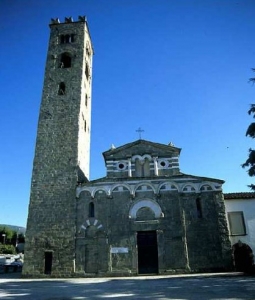
Information
Address:
Via delle Selvette, 55018 Capannori (LU), Segromigno in Monte locality
Foundation:
IX century
Telephone:
+39 0583 928031
District/Location:
Capannori, Segromigno in Monte
District:
Piana di Lucca


Traditionally documented as among the parish churches founded by S. Frediano, the earliest reference to the Parish Church of S. Lorenzo in Segromigno dates to 816. The present day plan, apart from the apsidal part altered in the 18th century, can be dated to the 12th century.
Segromigno in Monte, Capannori
Documented towards the middle 9th century as dependent on the Parish Church of S. Frediano di Lunata, the Church of S. Lorenzo results as being promoted to Parish Church in 872. Between the 9th and 10th century its influence extended to the surroundings hills, from mount Gromigno to the plain, already in agricultural use at the time with numerous mills and farming settlements. In the 10th century most of the revenues from churches and villas in the area went to a powerful family resident in the nearby castle. The "Estimo" of 1260 records Segromigno has having eight dependent churches and two small hospitals, including S. Quirico in Petroio, also using medieval forms. The present day building has characteristics that, although testifying the acknowledgement of the novelty created by Buscheto in the Cathedral of Pisa, closely link it to the architecture of Lucca of the time: the proportions and division of the façade, with its slightly emergent central nave, recall the churches of Valdottavo and Diecimo, while the sculptural decorations are akin to those of the parish church of Brancoli, for the neo-antique references of the architrave and the eastern-like features of the lions. Similarly, the motif on the side walls of the architraved pilasters and cornices moulded at the base and the sides of the single lancet windows recall the church of S. Leonardo in Treponzio, another typical example of early 12th century Lucca architecture. However, the accentuation of the blind arches is decidedly Pisan, especially considering that these normally appeared in the tympanum around the twin lancet window. In the 18th century the apse was replaced by the present day choir, and the interior was given a vault and large openings replaced the single lancet windows. Of the works of art here, the marble Shrine with the Pietà of Baccio da Montelupo dated to 1519 and the frescos by Luigi Ademollo are particularly notable.
Scopri altre attrazioni vicino a Saint Lorenzo in Segromigno in Monte
See allYou may also like..
See allFind more
0











